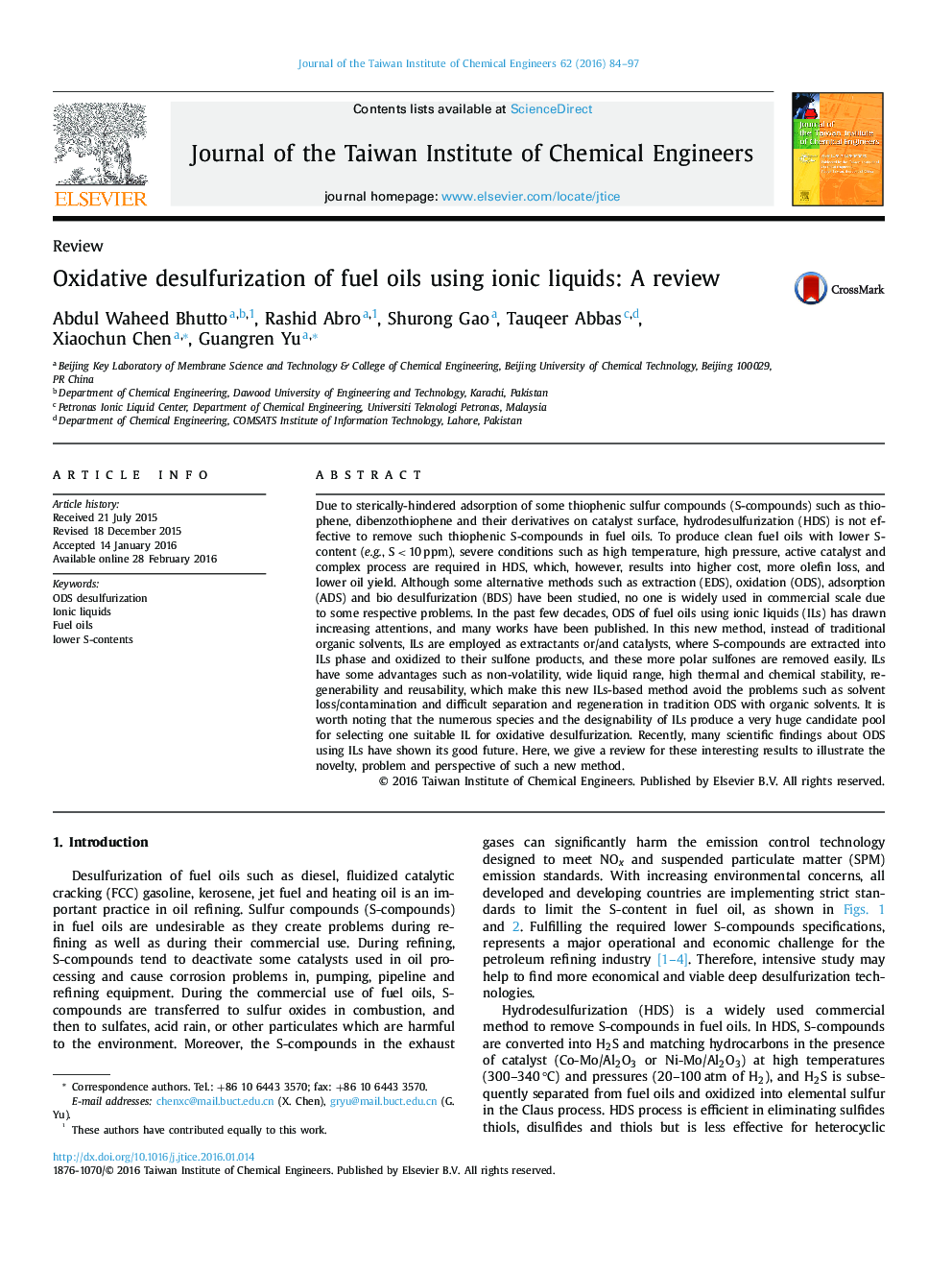| کد مقاله | کد نشریه | سال انتشار | مقاله انگلیسی | نسخه تمام متن |
|---|---|---|---|---|
| 690308 | 1460412 | 2016 | 14 صفحه PDF | دانلود رایگان |
• Oxidative desulfurization (ODS) of fuel oils using ionic liquids (ILs) is reviewed.
• ILs have advantages over molecular solvents, such as non-volatility, wide liquid range, high thermal and chemical stability, regenerability and reusability.
• ODS using ILs is a promising technology for the elimination of S-compounds from fuel oils.
Due to sterically-hindered adsorption of some thiophenic sulfur compounds (S-compounds) such as thiophene, dibenzothiophene and their derivatives on catalyst surface, hydrodesulfurization (HDS) is not effective to remove such thiophenic S-compounds in fuel oils. To produce clean fuel oils with lower S-content (e.g., S < 10 ppm), severe conditions such as high temperature, high pressure, active catalyst and complex process are required in HDS, which, however, results into higher cost, more olefin loss, and lower oil yield. Although some alternative methods such as extraction (EDS), oxidation (ODS), adsorption (ADS) and bio desulfurization (BDS) have been studied, no one is widely used in commercial scale due to some respective problems. In the past few decades, ODS of fuel oils using ionic liquids (ILs) has drawn increasing attentions, and many works have been published. In this new method, instead of traditional organic solvents, ILs are employed as extractants or/and catalysts, where S-compounds are extracted into ILs phase and oxidized to their sulfone products, and these more polar sulfones are removed easily. ILs have some advantages such as non-volatility, wide liquid range, high thermal and chemical stability, regenerability and reusability, which make this new ILs-based method avoid the problems such as solvent loss/contamination and difficult separation and regeneration in tradition ODS with organic solvents. It is worth noting that the numerous species and the designability of ILs produce a very huge candidate pool for selecting one suitable IL for oxidative desulfurization. Recently, many scientific findings about ODS using ILs have shown its good future. Here, we give a review for these interesting results to illustrate the novelty, problem and perspective of such a new method.
Figure optionsDownload as PowerPoint slide
Journal: Journal of the Taiwan Institute of Chemical Engineers - Volume 62, May 2016, Pages 84–97
